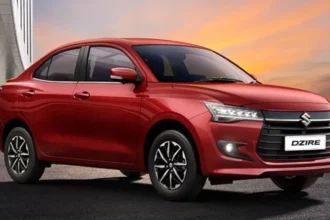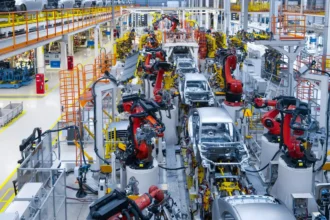China’s recent decision to stop exporting rare earth magnets to several countries, including India and the US, has raised serious concerns for India’s automobile and electric vehicle (EV) industry. These magnets are a crucial part of many car components—motors, power windows, sensors, audio systems, wipers, and even braking systems. With over 80% of India’s rare earth magnets coming from China, the sudden export ban could create a big shock for the Indian auto market.
According to analysts, companies like Bajaj Auto, Tata Motors, TVS Motors, Ola Electric, and others could soon feel the impact. Ajit Mishra, an expert from Religare Broking, said that Indian EV manufacturers, especially those producing two-wheelers, are facing short-term supply problems. “Inventories may not last more than a few weeks,” he said. “With no other immediate suppliers, companies might either raise prices or slow down production.”
SimranJeet Singh Bhatia, an analyst from Almondz Global Securities, echoed these concerns. He noted that Exide Industries, which has invested heavily in making EV batteries, could also suffer from supply chain disruptions. The problems may not be visible in current financial reports, but the stress is building behind the scenes.
Bhatia further warned that companies already under financial pressure, such as Ola Electric, which carries significant debt, may see more pressure on their profit margins in the coming months.
May 2025 EV Sales: A Quick Snapshot
The EV sector in India has shown strong growth in recent times, especially in two-wheeler sales. Here’s how some major players performed in May 2025:
- TVS Motors led the chart with 24,550 units sold.
- Bajaj Auto followed with 21,770 units.
- Ola Electric came third with 18,550 units.
These figures show that EV demand is high, but the sudden lack of supply could harm this momentum.
Atul Karwa from HDFC Securities pointed out that this ban is part of broader global trade tensions. “China controls nearly 70% of rare earth mining and 90% of magnet production worldwide. It’s using this dominance to gain leverage in international trade talks,” Karwa said. He also warned that producing rare earth magnets is both expensive and energy-intensive, making it hard for other countries to catch up quickly.
Karwa said most Indian original equipment manufacturers (OEMs) expect their current magnet stock to last only until the end of this month. After that, the situation could become more difficult unless diplomatic talks with China bring some relief.
What Are Rare Earth Magnets and Why Are They So Important?
Rare earth magnets are made from a group of 17 unique metals, known as rare earth elements. The most common and powerful type is made from neodymium, iron, and boron. These magnets are very important for making electric vehicle motors work efficiently.
Each electric vehicle uses around 1 to 2 kilograms of rare earth magnets. These materials make the motors smaller and lighter while increasing power. This helps EVs to accelerate better, run faster, and last longer on a single charge. Rare earth magnets are also used in critical car components like gearboxes and drive trains.
Their use is not limited to electric vehicles alone—conventional vehicles also use them in features like power steering, automatic windows, and infotainment systems. Therefore, the export ban could hit the broader auto industry as well.
Why Did China Announce This Ban?
The move seems to be a part of China’s response to earlier actions by the US. According to Atul Karwa from HDFC Securities, this is connected to high tariffs placed by former US President Donald Trump. Though the current ban is not only aimed at the US, India has become one of the affected nations, possibly due to its growing role in global EV production and trade relations with the West.
This isn’t the first time China has used rare earth exports as a strategic tool. Experts say China knows the value of its dominance in this field and may use it to influence global policy and trade.
What’s the Road Ahead for India’s EV Sector?
While the short-term effects are mostly negative, some analysts believe the situation could bring long-term benefits. SimranJeet Singh Bhatia believes this could be a wake-up call for India. “In the long run, this might push Indian companies and policymakers to search for and invest in alternative sources of rare earths,” he said.
India could explore partnerships with countries like Australia, the US, and Vietnam, which also have rare earth reserves. Some Indian companies and government bodies are already looking at recycling old magnets or sourcing materials from e-waste, though these solutions will take time to scale.
Diplomatic efforts will also be important. Karwa suggested that government-to-government talks with China might help to restart the supply chain, even partially, or gain special approval for critical shipments. However, that depends on how the geopolitical tensions unfold.
Conclusion: Caution Now, Hope for the Future
China’s rare earth magnet ban is a serious short-term threat to India’s booming electric vehicle industry. With most manufacturers depending on Chinese supply, the sudden halt could slow down EV production, increase prices, and hurt sales. But it may also push India toward becoming more self-reliant in critical raw materials.
In the future, the country might benefit from setting up its own rare earth processing plants, forming global alliances, or even investing in new technologies that reduce or eliminate the need for rare earths altogether. For now, the auto industry waits anxiously for solutions—whether they come from trade talks, new suppliers, or innovation at home.










